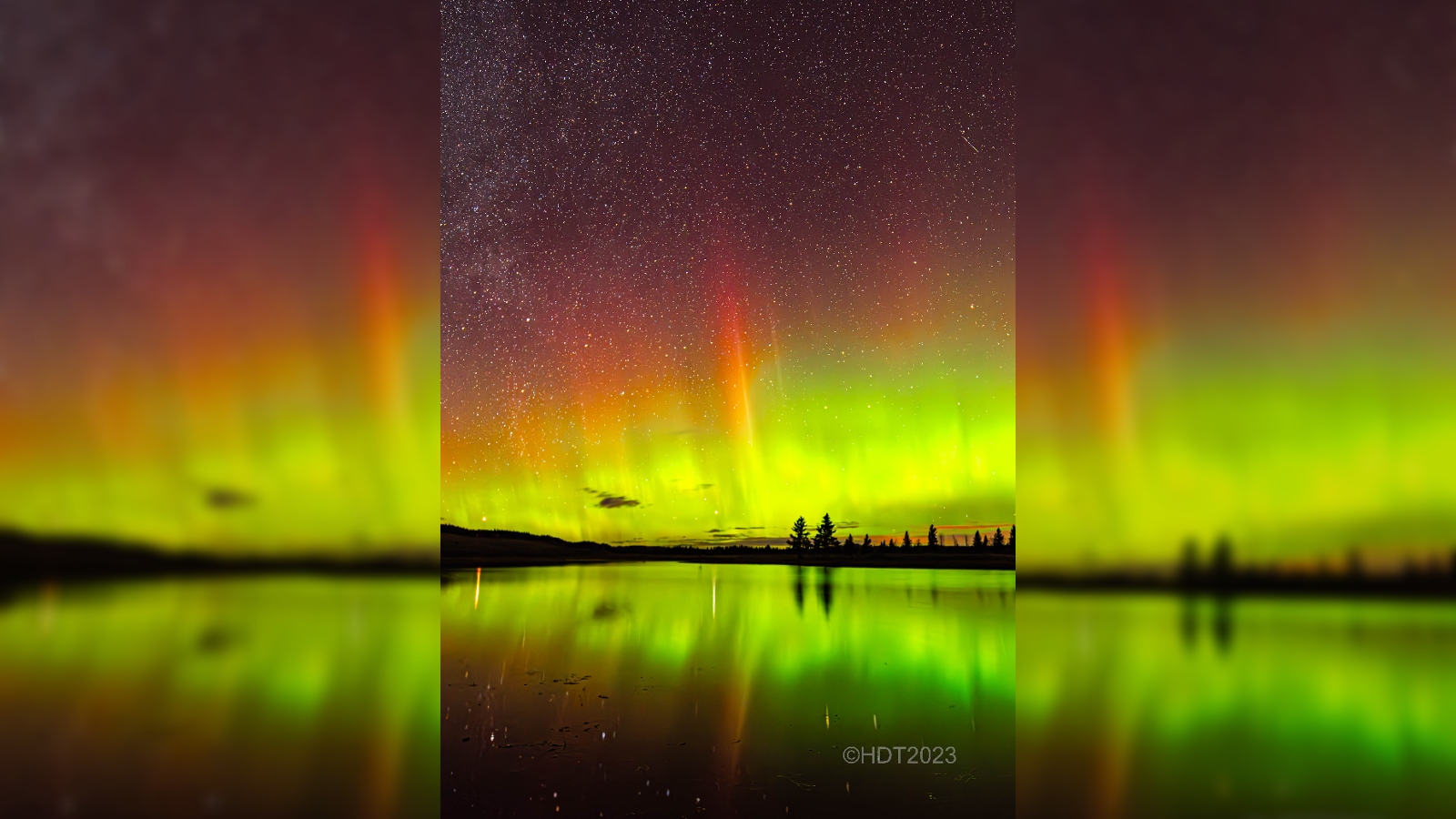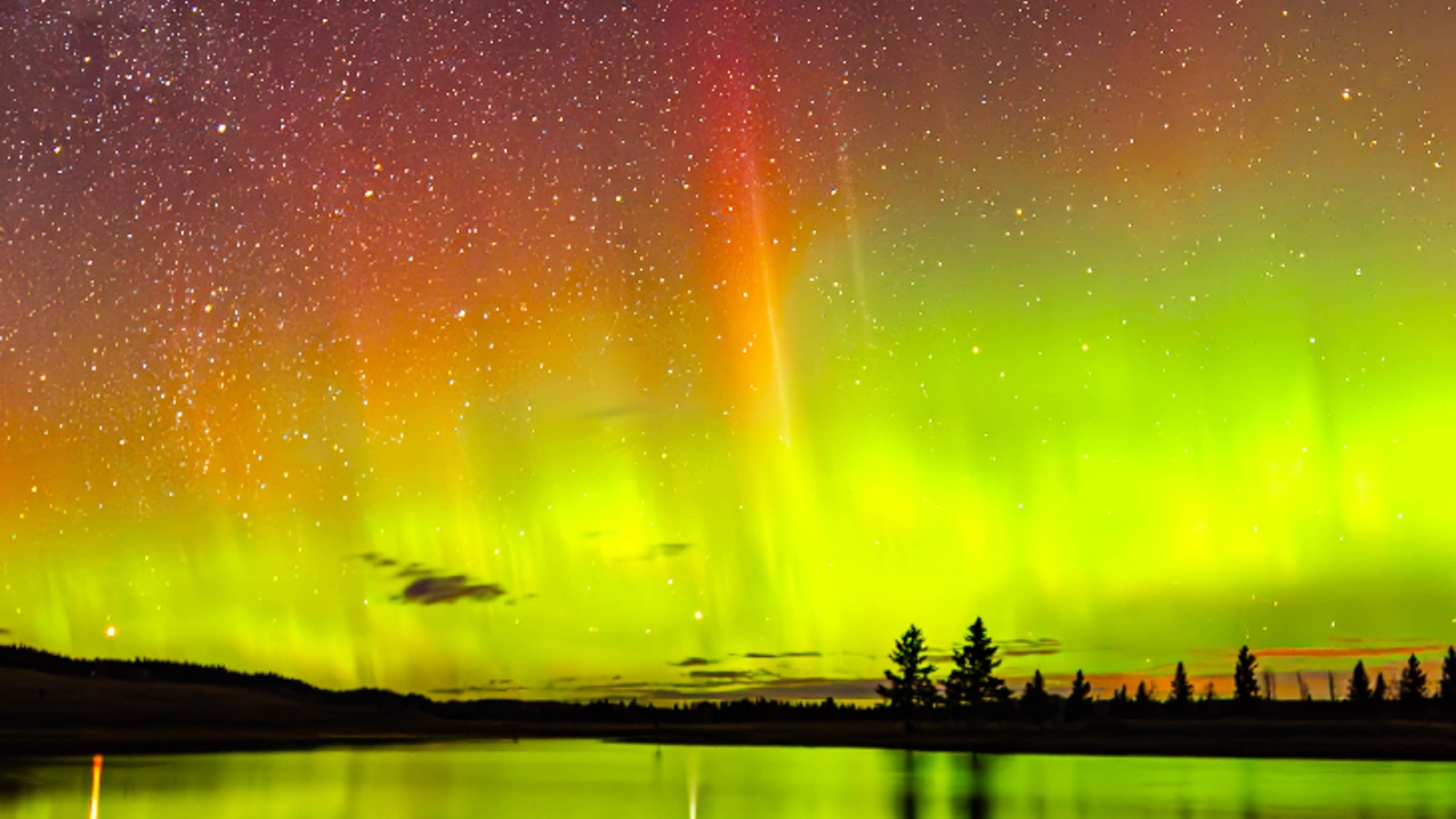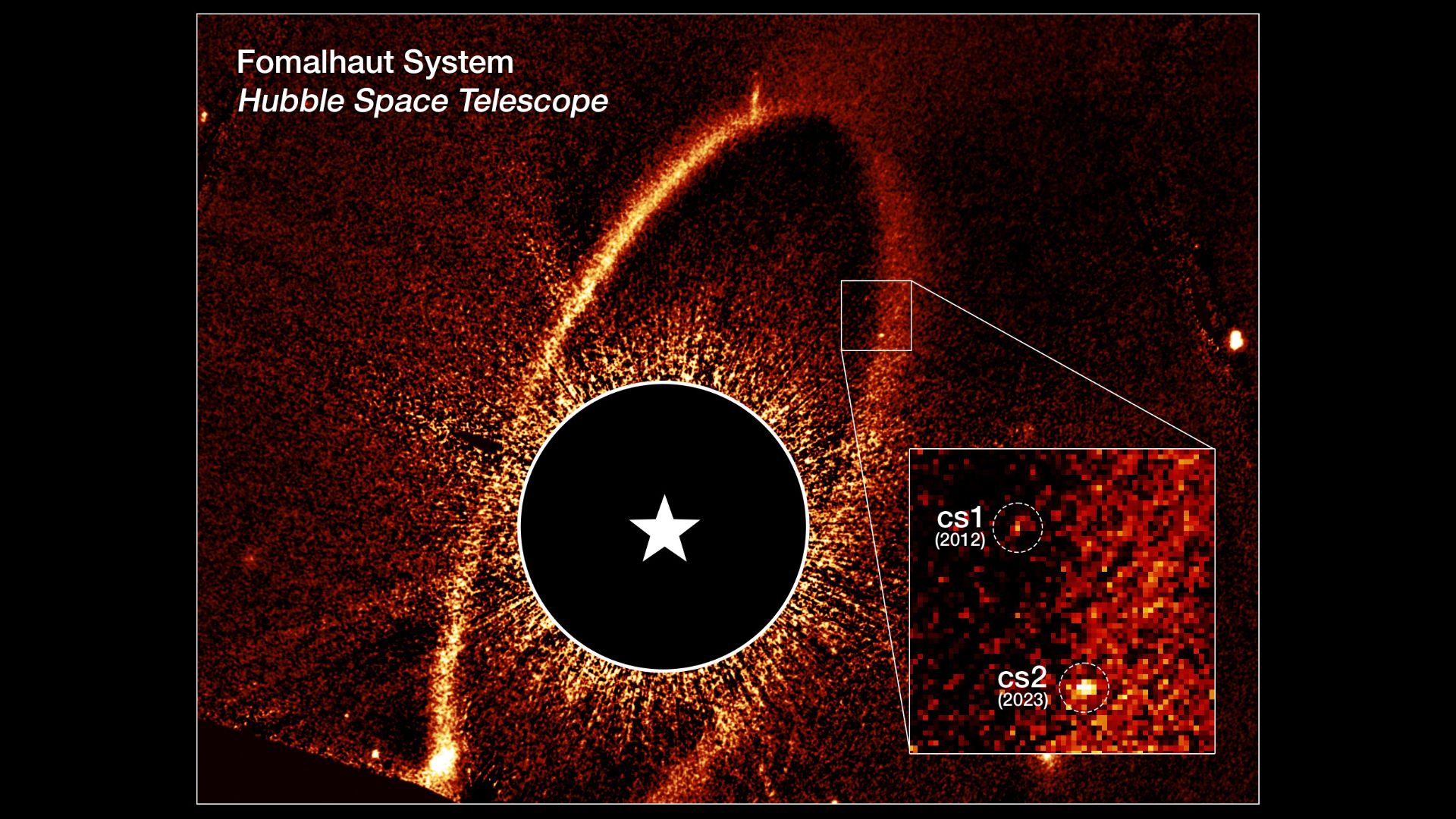Solar storm causes 'impossible,' pumpkin-colored auroras to fill the sky
A striking new image shows bright orange auroras dancing in the night sky above Canada. But auroras should never be this color, so what's going on?
A recent solar storm smashed into Earth and created what appeared to be bright pumpkin-colored pillars dancing in the night sky above Canada, a haunting new photo reveals. But there is a problem with the image: Orange-colored auroras should not exist.
Instead of impossible auroras, the image actually captured a rare mix of red and green lights that hasn't been this visible since a monstrous Halloween solar storm smashed into Earth 20 years ago, experts say.
"The orange was sublime, just incredible," aurora photographer Harlan Thomas told Spaceweather.com. "The pillars in the center stayed there glowing for more than 20 minutes."
Thomas captured the colorful shot on Oct. 19 above a pond to the west of Calgary in Alberta, around three days after the sun launched a hefty, slow-moving coronal mass ejection (CME) toward Earth.
Related: 10 bizarre phenomena that lit up the sky (and their scientific explanations)
Auroras are created when high-energy particles from CMEs or solar wind bypass Earth's magnetic shield, or magnetosphere, and superheat gas molecules in the upper atmosphere. The excited molecules release energy in the form of light, and the color of that light depends on which element is being excited. The two most common aurora colors are red and green, which are both given off by oxygen molecules at different altitudes (red auroras are produced at higher altitudes than their green variants). But when the solar particles penetrate deep into the atmosphere, they can also trigger rare pink auroras when they excite nitrogen molecules.
Theoretically, both oxygen and nitrogen molecules can give off orange wavelengths under specific conditions. However, even when this happens, the orange is overwhelmed by the other colors given off by the molecules surrounding it, making it practically impossible to see these wavelengths, Spaceweather.com reported.
Get the world’s most fascinating discoveries delivered straight to your inbox.
So how do we see this color in the latest image?
"There can be a mixing of the two processes [red and green auroras], which fools the camera and eye to believe that it is orange," Kjellmar Oksavik, a space weather scientist and aurora expert at the University of Bergen in Norway, told Spaceweather.com. "In reality, it is both red and green at the same time."
Despite red and green auroras frequently occurring together in the sky, "orange" auroras are very rare. The orange color is most visible at the center of large auroral rays — vertical pillars of light that align along invisible magnetic field lines — that are made up of both red and green light, which are very uncommon, Oksavik said.
The last time such vibrant pumpkin-like hues were spotted was the great Halloween storm of 2003 — the most powerful solar storm in modern records, Spaceweather.com reported. During this epic event, the orange lights were spotted across North America and northern Europe.

Harry is a U.K.-based senior staff writer at Live Science. He studied marine biology at the University of Exeter before training to become a journalist. He covers a wide range of topics including space exploration, planetary science, space weather, climate change, animal behavior and paleontology. His recent work on the solar maximum won "best space submission" at the 2024 Aerospace Media Awards and was shortlisted in the "top scoop" category at the NCTJ Awards for Excellence in 2023. He also writes Live Science's weekly Earth from space series.




